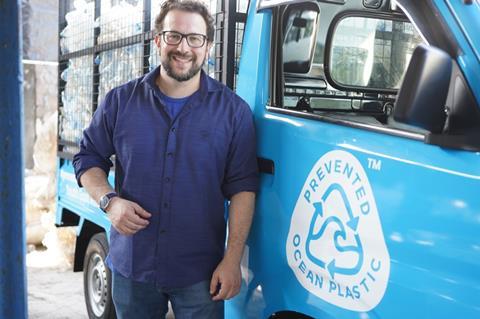
A key part of putting an end to plastic pollution is enhancing our understanding of exactly where this plastic is coming from in the first place. To that end, Prevented Ocean Plastic is embarking on a research project with experts from the University of Georgia that will explore this issue. Raffi Schieir, Director of Prevented Ocean Plastic and Bantam Materials, tells us more.
Each year, 11 million tonnes of plastic enters our oceans. If nothing changes, the annual flow of plastic waste from land to sea could triple to 29 million tonnes by 2040. We can’t let this happen. The first step? Broaden our understanding of exactly how waste on the land ends up in our oceans.
While plastic has many practical uses, flooding and overspill often cause litter to travel between waterways, ultimately ending up in the ocean. Once there, it creates countless problems including damaging vital ocean ecosystems. A portion of it travels out to gigantic ‘garbage patches’, where it gets caught in a vortex, circulating in currents alongside plastic waste from many different sources, including dumped fishing gear.
To date, most academic research has focused on litter entering the ocean directly from coastal areas. Although we know that it also travels from further inland via stormwater, evidence on how it does so is lacking. This gap in our knowledge must be filled. We can’t prevent ocean plastic pollution unless we know exactly how it’s happening.
That’s why Prevented Ocean Plastic - our branded recycling programme that turns coastline plastic collection into recycled ocean-bound product on shelves - is funding new research that should deepen our understanding of how plastic litter from inland ends up in the sea after heavy rainfall. This is especially important as temperatures rise and extreme weather events, including precipitation, increase.
Entitled Inland Litter Hydrodynamics: Characterising the Litter Transport during Wet Weather Events in Communities, the research will be co-led by two of the world’s foremost experts on plastics and marine litter – distinguished environmental engineer, Dr. Jenna Jambeck of the University of Georgia in the US, and Dr. Felix Santiago-Collazo, a renowned specialist in flooding events and numerical modelling.
One of the research’s main objectives is to map out what kind of plastic is where, to hold those behind it accountable and make plans to divert it. Inland litter pollution continues to burden communities, especially those that don’t have access to workable recycling and waste management services. With this research we’re hoping to empower them to take action by providing them with local-level data.
To this end, the researchers will help create a tool so that community leaders can identify: the scale and type of plastic coming into their community; how it is used; what alternatives are available; how it is managed; and what is leaking out into the sea and other natural environments. The idea is that the tool, once tested, can be used worldwide, facilitating community-led decision-making everywhere. It should be a great example of how better evidence can help us clean up the ocean.
Using the tool, communities will be able to identify litter hotspots after rainfall, meaning they can then devise strategies to avoid the accumulation of plastic waste in these locations and so prevent it from reaching a waterway – and eventually the ocean.
The research won’t just analyse which plastic packaging products are leaking out into the environment. It will also investigate local plastic inputs, detailing which products and packaging are available and popular. By understanding the specific kinds of plastic that are causing the local pollution problem, people can then choose to avoid it or replace it with an alternative. In the transition to a circular economy, cutting down on plastic is as vital as recycling, if not more so.
The reality is we need to rethink the word ‘waste’ itself. We must start valuing our resources more fully and focusing on their capacity to be reused, repurposed and recycled. Currently, 95% of the value of plastic packaging material, worth $80-120 billion annually, is lost to the economy. Nothing should be leftover, especially not to pollute and degrade nature. We need to aim for a world in which no plastic ends up in any kind of waterway.
To make this a reality, it’s crucial for business to support the academic research that will deliver the evidence we need to understand the mess our oceans are in. When it comes to our ocean plastic pollution problem, its scale is almost too big to comprehend. Only when we analyse and map it can we begin to fix it.




















No comments yet